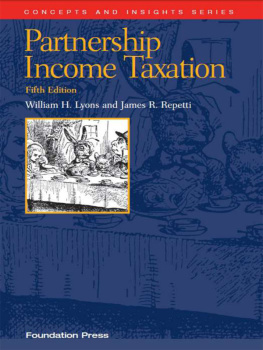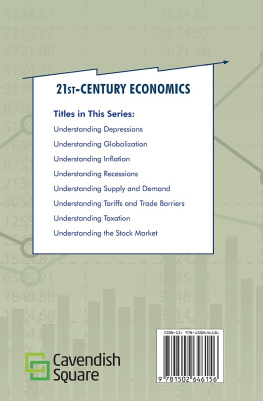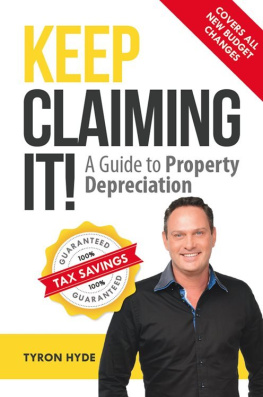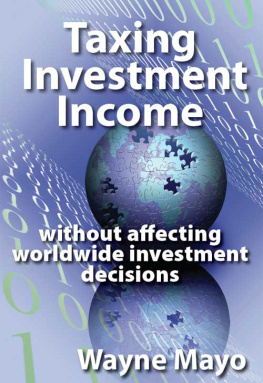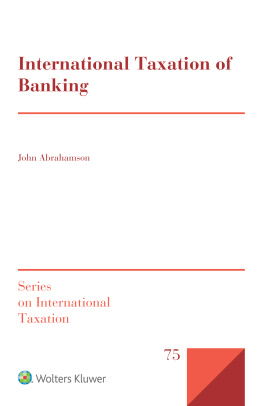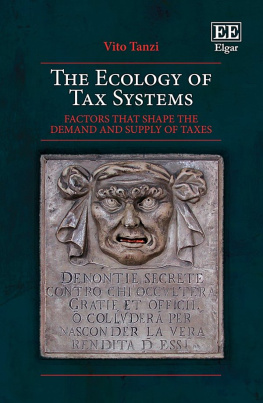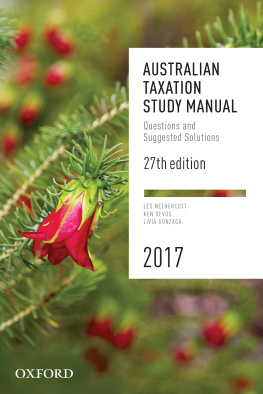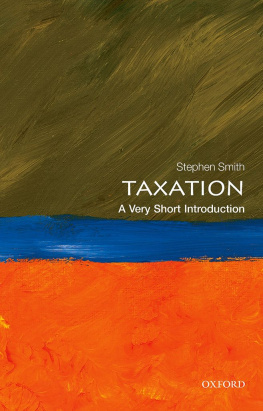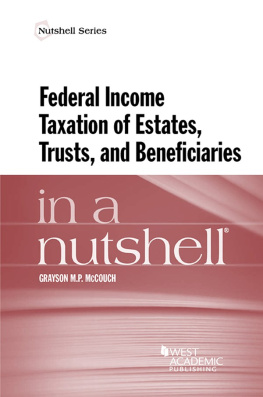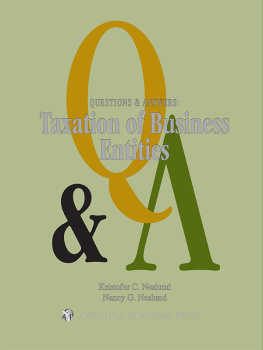Australian
Taxation
Law
28th Edition
2018
Robin Woellner
Stephen Barkoczy
Shirley Murphy
Chris Evans
Dale Pinto

Oxford University Press is a department of the University of Oxford. It furthers the Universitys objective of excellence in research, scholarship, and education by publishing worldwide. Oxford is a registered trademark of Oxford University Press in the UK and in certain other countries.
Published in Australia by
Oxford University Press
253 Normanby Road, South Melbourne, Victoria 3205, Australia
Oxford University Press 2018
The moral rights of the authors have been asserted.
First edition | September 1987 | Seventeenth edition | December 2006 |
Second edition | February 1990 | Reprinted | March 2007 |
Third edition | December 1990 | Eighteenth edition | December 2007 |
Fourth edition | January 1993 | Nineteenth edition | January 2009 |
Fifth edition | December 1994 | Reprinted | June 2009 |
Sixth edition | January 1996 | Twentieth edition | December 2009 |
Seventh edition | January 1997 | Reprinted | July 2010 |
Eighth edition | December 1997 | Reprinted | September 2010 |
Ninth edition | December 1998 | Twenty-first edition | December 2010 |
Tenth edition | November 1999 | Twenty-second edition | December 2011 |
Eleventh edition | December 2000 | Twenty-third edition | December 2012 |
Twelfth edition | December 2001 | Twenty-fourth edition | December 2013 |
Thirteenth edition | December 2002 | Twenty-fifth edition | December 2014 |
Fourteenth edition | December 2003 | Twenty-sixth edition | December 2015 |
Fifteenth edition | December 2004 | Twenty-seventh edition | December 2016 |
Sixteenth edition | December 2005 | Twenty-eighth edition | December 2017 |
All rights reserved. No part of this publication may be reproduced, stored in a retrieval system, or transmitted, in any form or by any means, without the prior permission in writing of Oxford University Press, or as expressly permitted by law, by licence, or under terms agreed with the appropriate reprographics rights organisation. Enquiries concerning reproduction outside the scope of the above should be sent to the Rights Department, Oxford University Press, at the address above.
You must not circulate this work in any other form and you must impose this same condition on any acquirer.
Reproduction and communication for educational purposes
The Australian Copyright Act 1968 (the Act) allows a maximum of one chapter or 10% of the pages of this work, whichever is the greater, to be reproduced and/or communicated by any educational institution for its educational purposes provided that the educational institution (or the body that administers it) has given a remuneration notice to Copyright Agency Limited (CAL) under the Act.
For details of the CAL licence for educational institutions contact:
Copyright Agency Limited
Level 15, 233 Castlereagh Street
Sydney NSW 2000
Telephone: (02) 9394 7600
Facsimile: (02) 9394 7601
Email: info@copyright.com.au
This edition edited by Natasha Broadstock, Roz Edmond, Carolyn Leslie, and Valina Rainer
Text design by Denise Lane, Sardine Design
Index by Glenda Browne
Typeset by Newgen KnowledgeWorks Pvt. Ltd., Chennai, India
Tables by Jon Jermey
Cover image: Shutterstock
Printed by Sheck Wah Tong Printing Press Ltd
Foreword to the First Edition
If two of the important criteria of a good taxation system are simplicity and certainty (1-190 and 1-195), the Australian taxation system and particularly the Income Tax Assessment Act 1936 fail the test miserably. The spate of anti-avoidance legislation, a reaction to the excesses of the tax avoidance era of the seventies, and the more recent taxation reform package have brought about legislation of almost unrivalled complexity.
The legislation is in some cases unintelligible: without a commerce or law degree the ordinary taxpayer stands no chance of finding his way through the morass and even with these qualifications his advisers will of necessity have to struggle to make sense of language that is as convoluted as it is confusing. Nor is the task of the taxation officer any easier. Many provisions in the legislation are not applied for the simple reason that no one is able to comprehend them. The need for a work that will operate as a guide to the traveller through these murky waters is painfully apparent.
In 1946, Mr Hannan, in his Treatise on the Principles of Income Taxation, while adverting to the desirability of enunciating a series of authoritative propositions (on s 51(1)), resignedly accepted the impossibility of such a task. Some 40 years on, the possibility of formulating authoritative principles on any matter relating to tax is even more daunting. The torrent of decisions, judicial and administrative, that has been handed down over that time, together with the outpourings of the legislature, have made the study of taxation almost unmanageable.
The need for a systematic approach to the study of taxation is obvious enough to the student. If the student were to see taxation as involving no more than an endless series of individual instances no overview of the subject would be possible. But it is not only the student who is in need of a systematic approach to the problem. The practitioner who is unaware of the system will have endless difficulty even finding the problem, let alone proceeding to a solution for that problem.
So it is not the student alone who will benefit from the present work. Indeed there are to be found discussed in these pages many of the great taxation issues of the present, without an appreciation of which it would be impossible to predict the outcome of particular factual situations.
By way of example, no issue could be more significant in the judge-made law of income taxation than the issue of the role of purpose in s 51(1) of the Act. The course of authority from Ure v FC of T 81 ATC 4100 and Ilbery v FC of T 81 ATC 4661 to the more recent cases of FC of T v Just Jeans Pty Ltd 87 ATC 4373 and FC of T v John 87 ATC 4713 have been a judicial reaction to tax avoidance; yet the boundaries of the doctrine (that purpose is relevant) are far from clear.
Two taxpayers incurring the same outgoings in circumstances identical save for their subjective motives and purposes should be treated in the same way for the purposes of an income tax law. To grant a taxation deduction to the taxpayer who is naive, while denying it to the taxpayer who is sophisticated, would be arbitrary. If an outgoing is incurred in circumstances where there is, objectively seen, a connection between the incurring of the outgoing and the activity which is directed towards the production of assessable income, that outgoing should satisfy the tests of deductibility irrespective of either subjective motivation or purpose.


